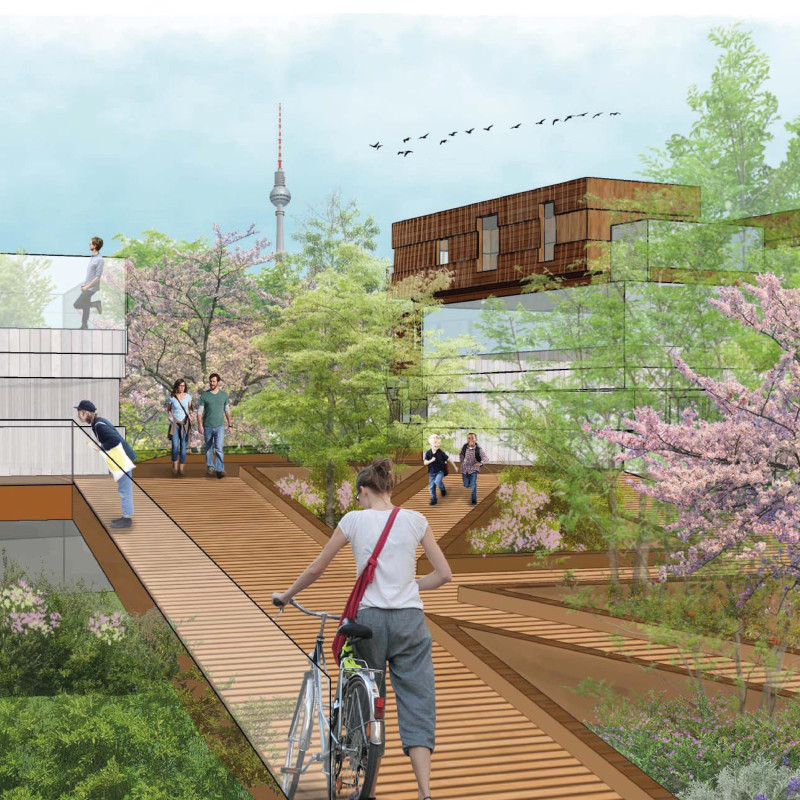5 key facts about this project
"Bridging the Gap" is situated in Berlin and aims to tackle urban housing issues by utilizing space above major motorways. The design centers on creating an inhabited bridge that provides affordable housing while enhancing connectivity in the city. This approach transforms overlooked areas into livable spaces, integrating them into the existing urban environment.
Design Concept
The main idea is to combine two functions: serving as a bridge for both pedestrians and vehicles while also providing residential units. By making use of the airspace over the busy motorways, the design addresses the problem of isolation and connects parts of the city that have been separated by infrastructure. This model not only meets the need for housing but also ensures that these homes contribute to the overall urban layout.
Construction Approach
The construction is planned in a systematic manner that begins with delivering materials, such as pre-fabricated units and bridge trusses, to the site. The process is designed to minimize disruption to traffic. First, the motorway is closed for the installation of structural elements, which allows for safe and efficient work. Once the bridge is in place, the road reopens, ensuring that mobility continues beneath the new structure.
Environmental Integration
Sustainability plays a crucial role in the design. The bridge aims to capture heat and kinetic energy generated from the traffic below. By using these energy sources, the project reflects a commitment to environmentally responsible practices. This integration improves the efficiency of the living spaces and supports broader sustainability goals.
The design promotes interaction among residents through shared spaces while also respecting their need for privacy. It takes previously unused urban areas and turns them into functional environments where people can live and interact comfortably. This focus on livability ensures that the inhabited bridge is not just a place to stay but a community within the city.



















































